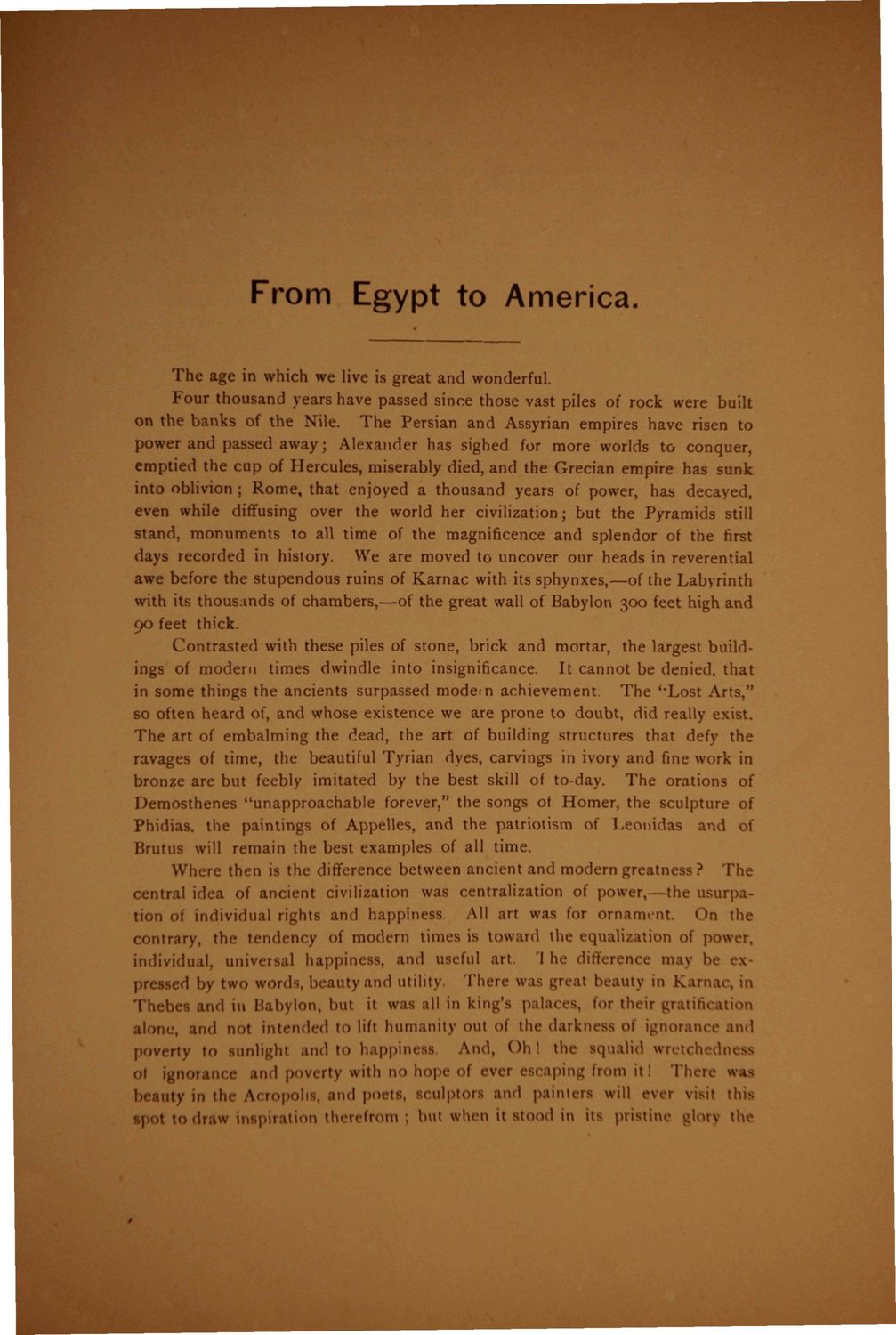| |
| |
Caption: Sophograph - 1889
This is a reduced-resolution page image for fast online browsing.

EXTRACTED TEXT FROM PAGE:
From Egypt to America. The age in which we live is great and wonderful. Four thousand years have passed since those vast piles oi rock were built on the banks of the Nile. The Persian and Assyrian empires have risen to power and passed away; Alexander has sighed for more worlds to conquer, emptied the cup of Hercules, miserably died, and the Grecian empire has sunk into oblivion ; Rome, that enjoyed a thousand years of power, has decayed, even while diffusing over the world her civilization; but the Pyramids still stand, monuments to all time of the magnificence and splendor of the first days recorded in history. We are moved to uncover our heads in reverential awe before the stupendous ruins of Karnac with its sphynxes,—of the Labyrinth with its thousands of chambers,—of the great wall of Babylon 300 feet high and 90 feet thick. Contrasted with these piles of stone, brick and mortar, the largest buildings of modem times dwindle into insignificance. It cannot be denied, that in some things the ancients surpassed modem achievement. The ''Lost Arts," so often heard of, and whose existence we are prone to doubt, did really exist. The art of embalming the dead, the art of building structures that defy the ravages of time, the beautiful Tynan dyes, carvings in ivory and fine work in bronze are but feebly imitated by the best skill of today. The orations of Demosthenes "unapproachable forever," the songs of Homer, the sculpture of Phidias, the paintings of Appelles, and the patriotism of Leonidas and of Brutus will remain the best examples of all time. Where then is the difference between ancient and modern greatness? The central idea of ancient civilization was centralization of power,—the usurpation of individual rights and happiness. All art was for ornament On the contrary, the tendency of modern tim toward the equalization of pov r, (dividual, universal hapj iess, and useful art I he difference ma be e* pressed by two words, beauty and utility There was great beauty in Kai in Thebes and in ! i.ylon, but it was all in king's palac< for their | ation alone, and not intended to lift humanity out ol the darknei of ignorance a vcrty to sunlight at to hap| And, < >h ' the squalid s iedn« I ignorance and poverty with 1 e of ever escaping from it! There was eauty m tin tcropol .iiwl 1 sculptors and painters will evei \ s) Irs insp therefrom ; bul when n 1 in its prii . the
| |